Glory Road
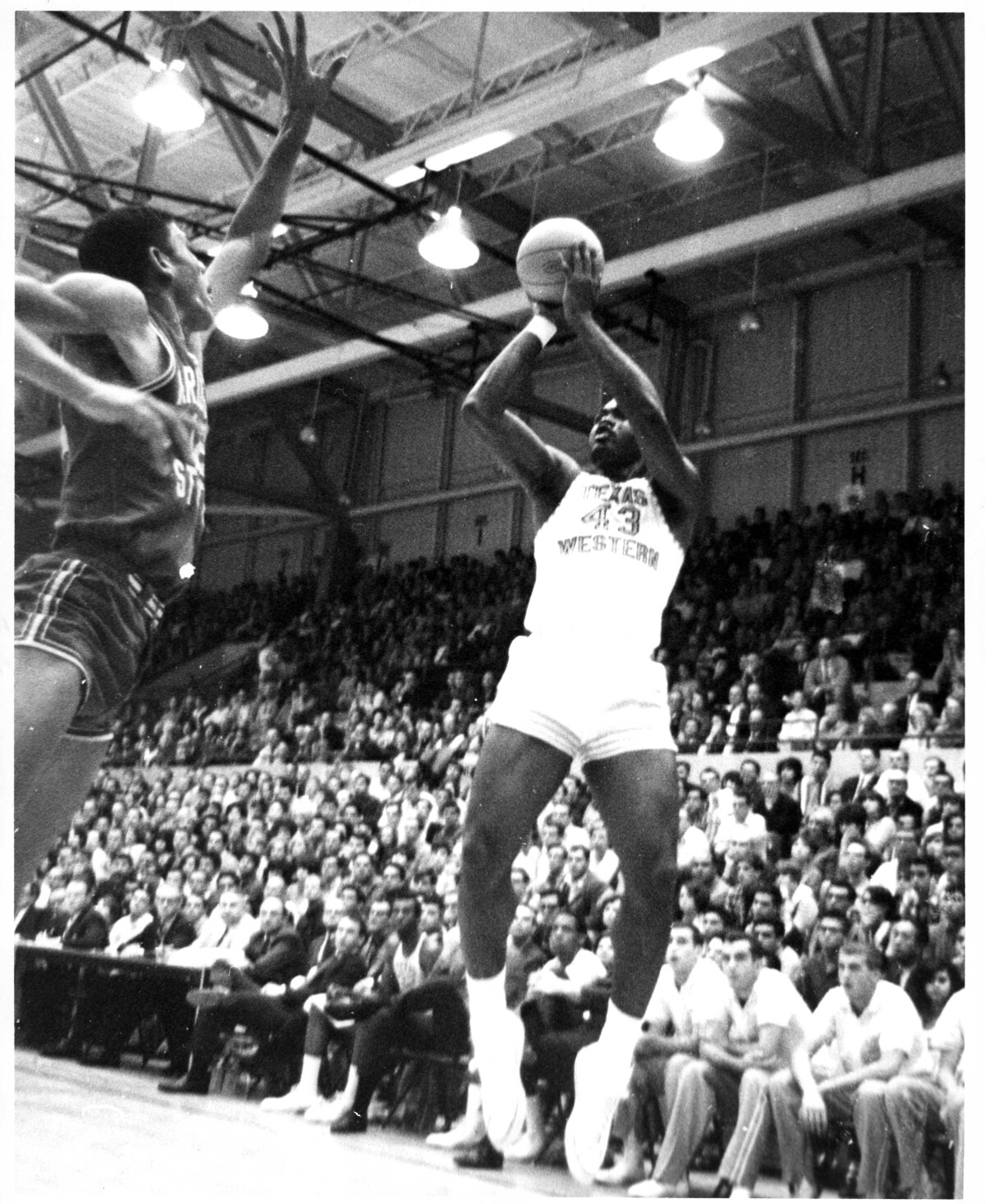
Glory Road
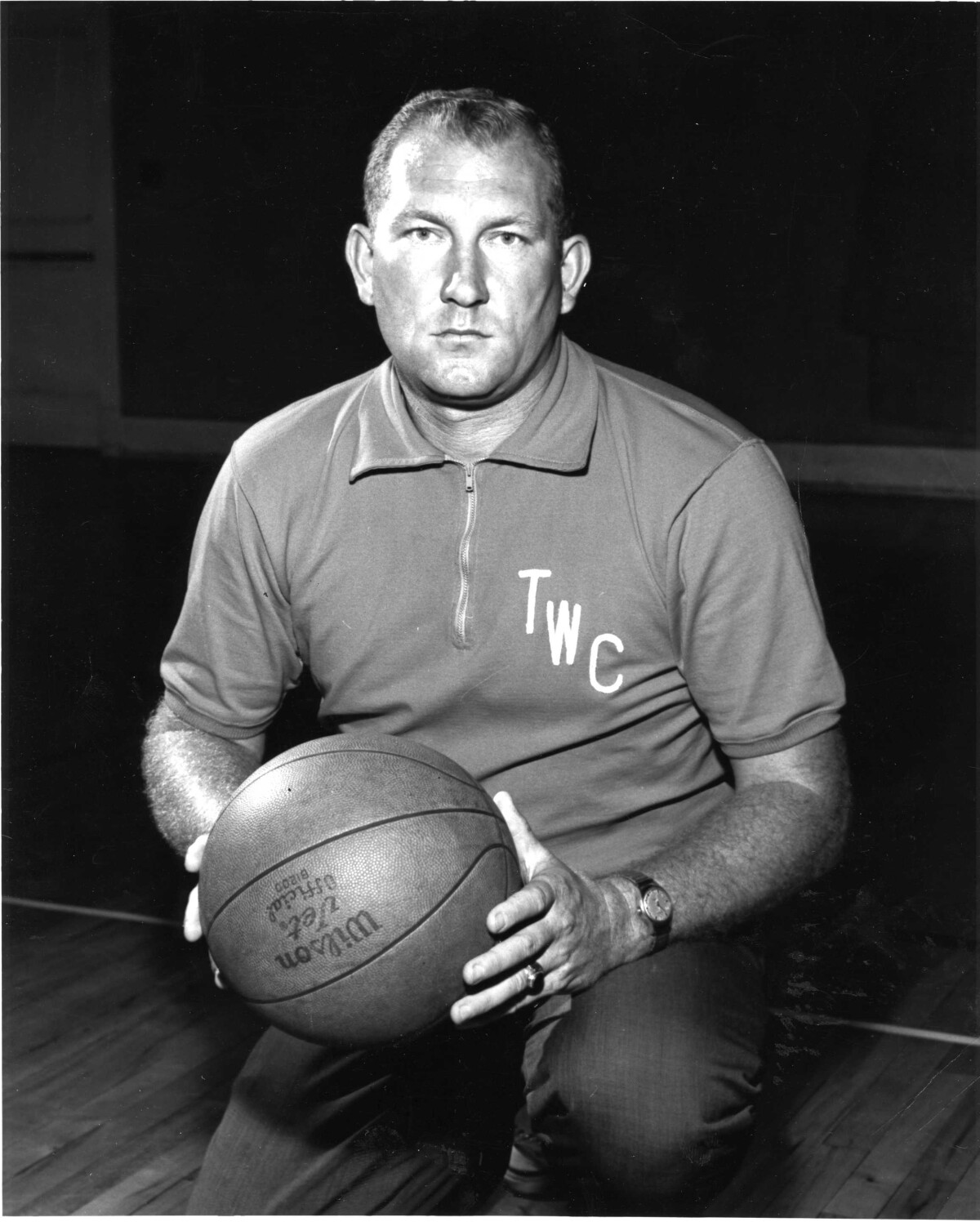
Glory Road
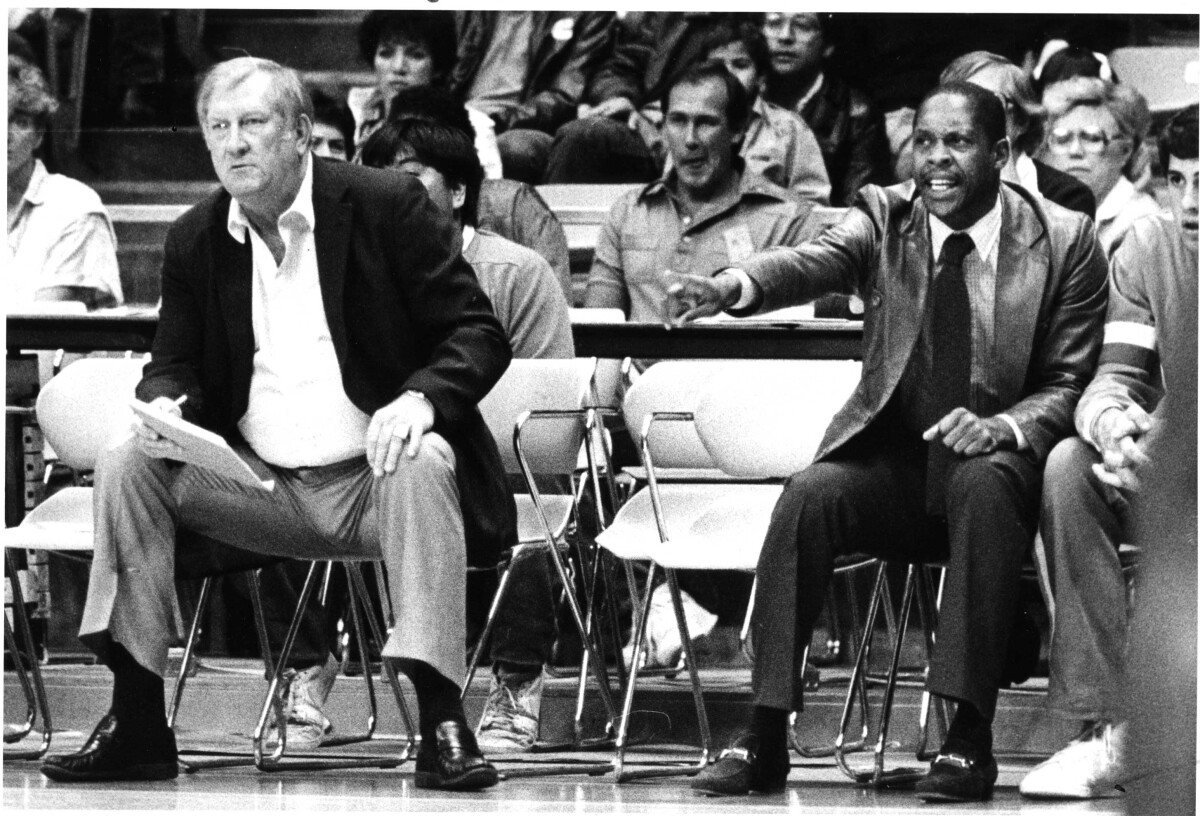
Glory Road
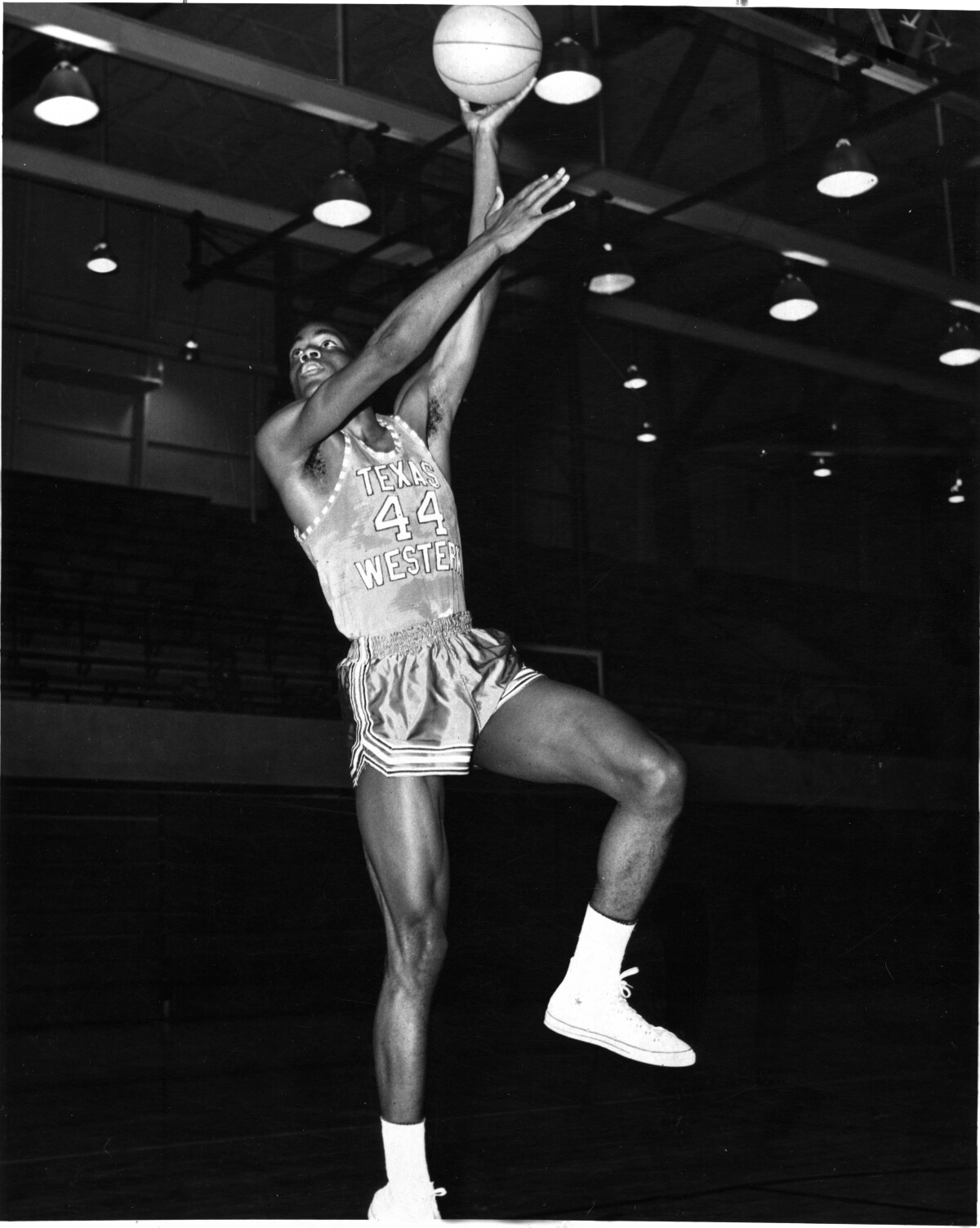
Glory Road
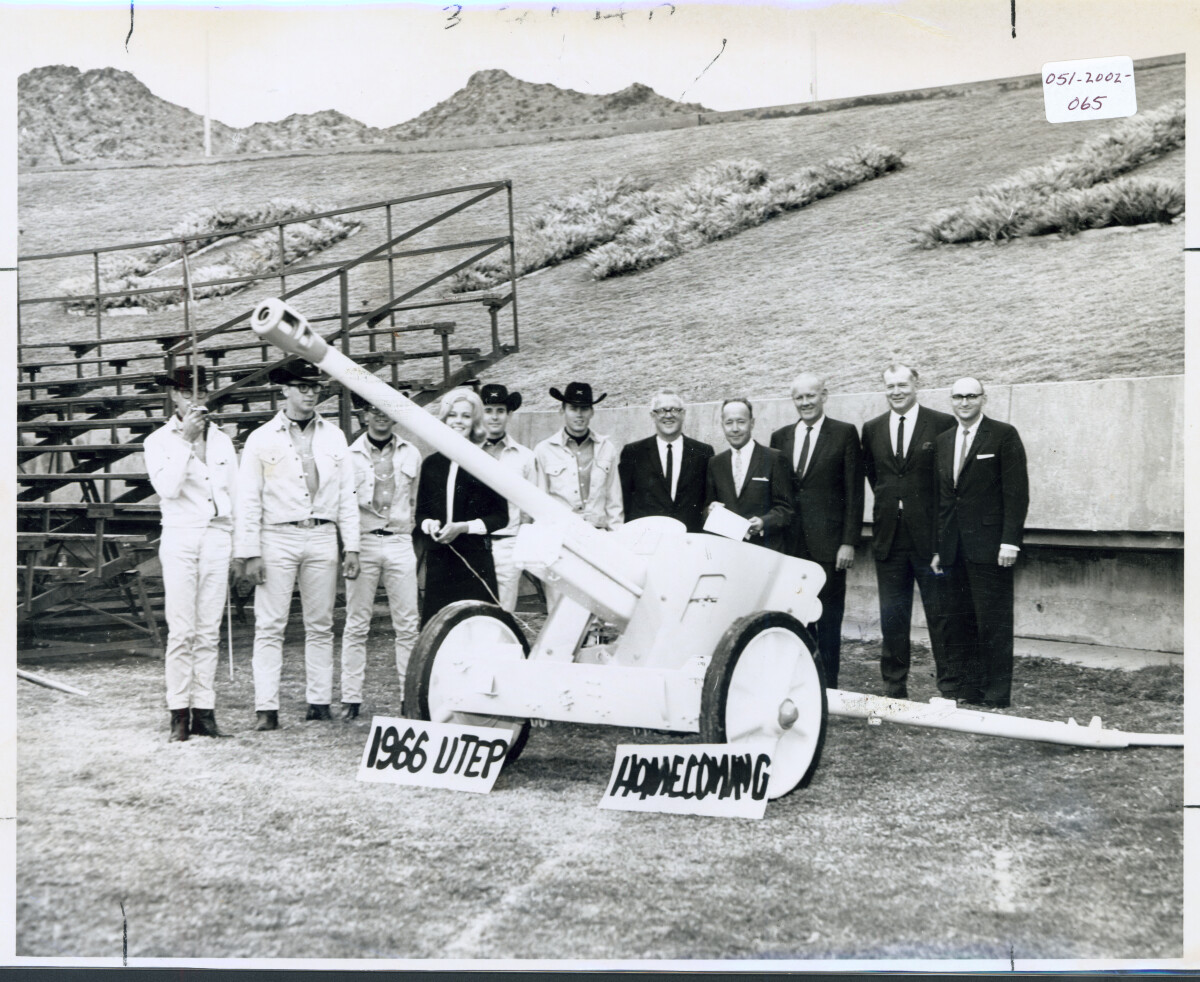
Glory Road
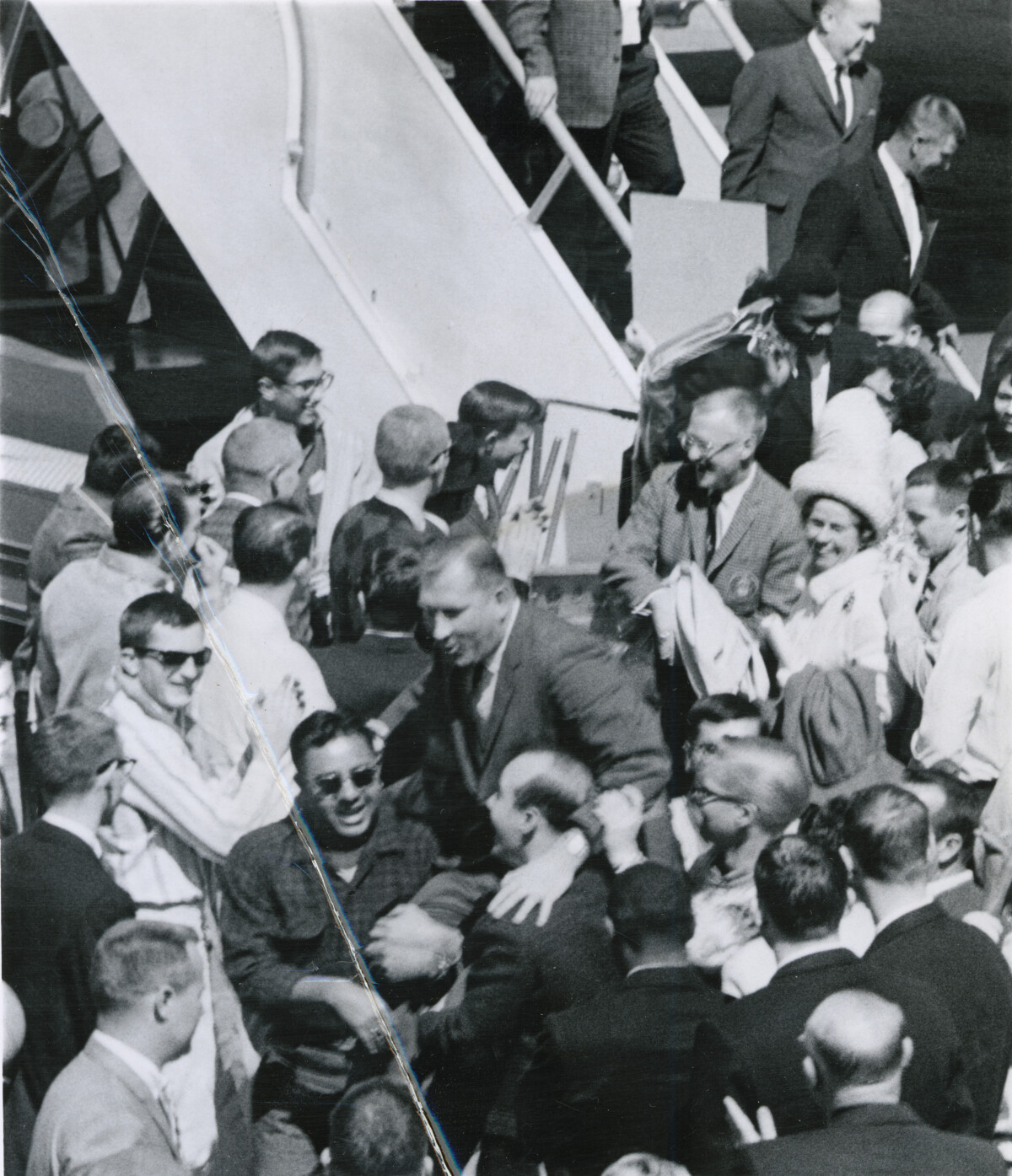
Glory Road
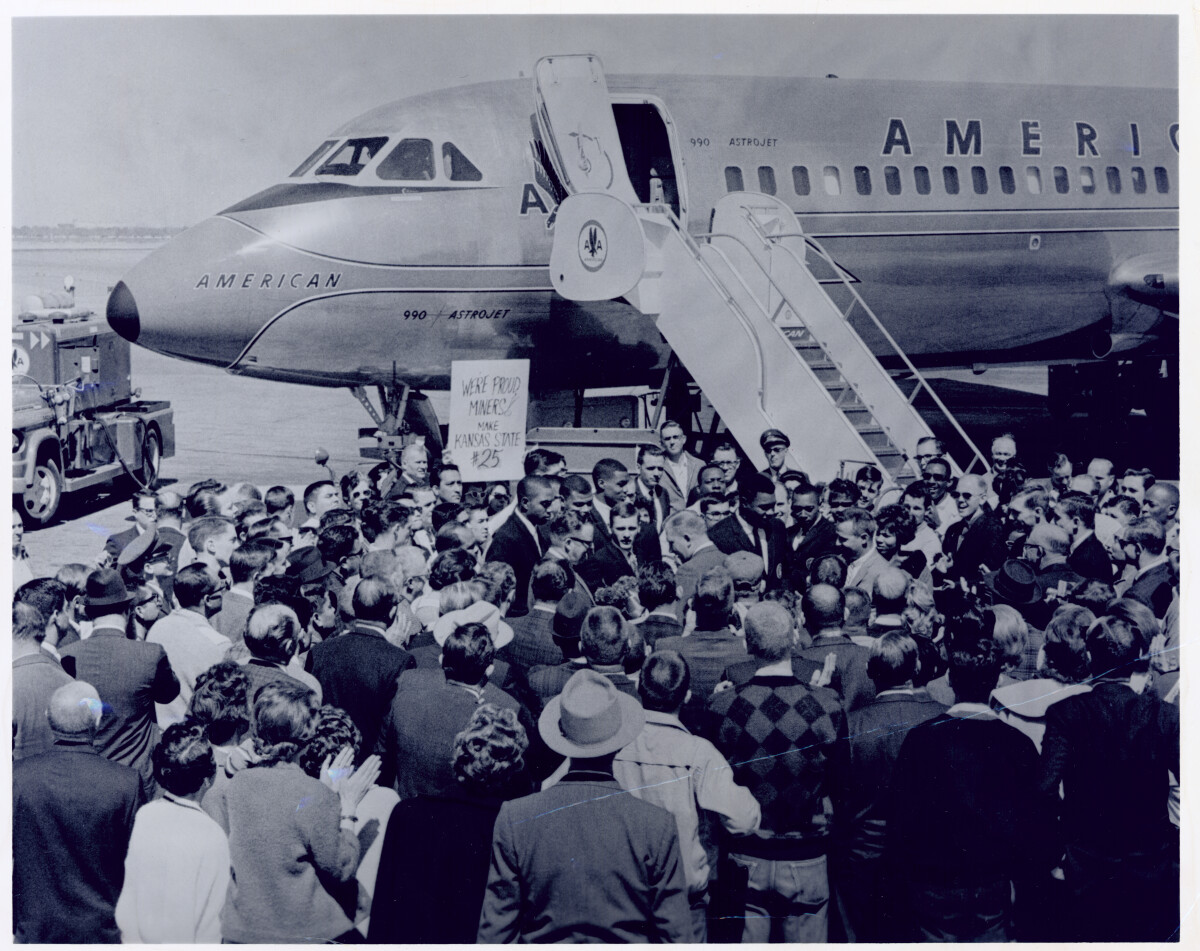
Glory Road
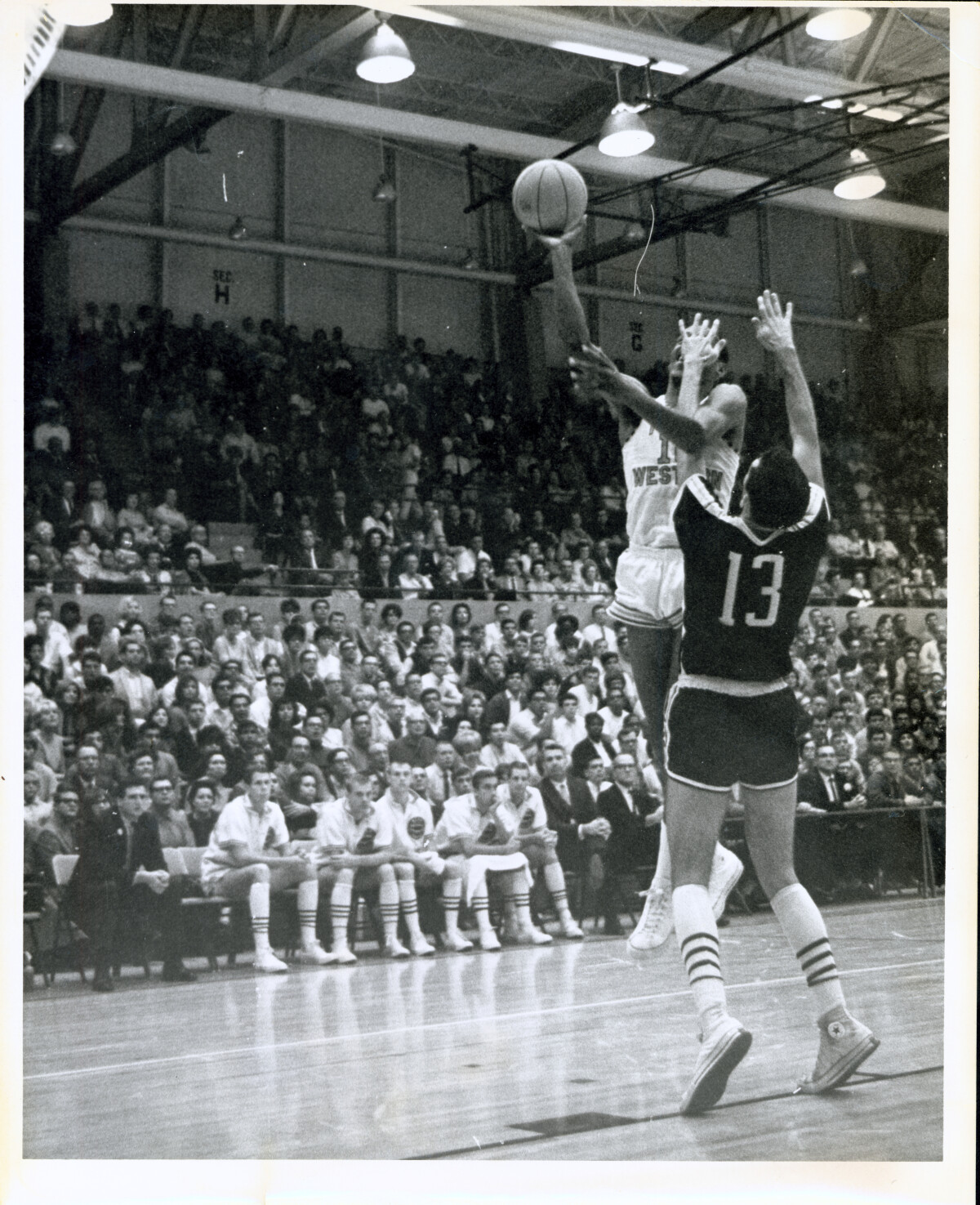
Glory Road
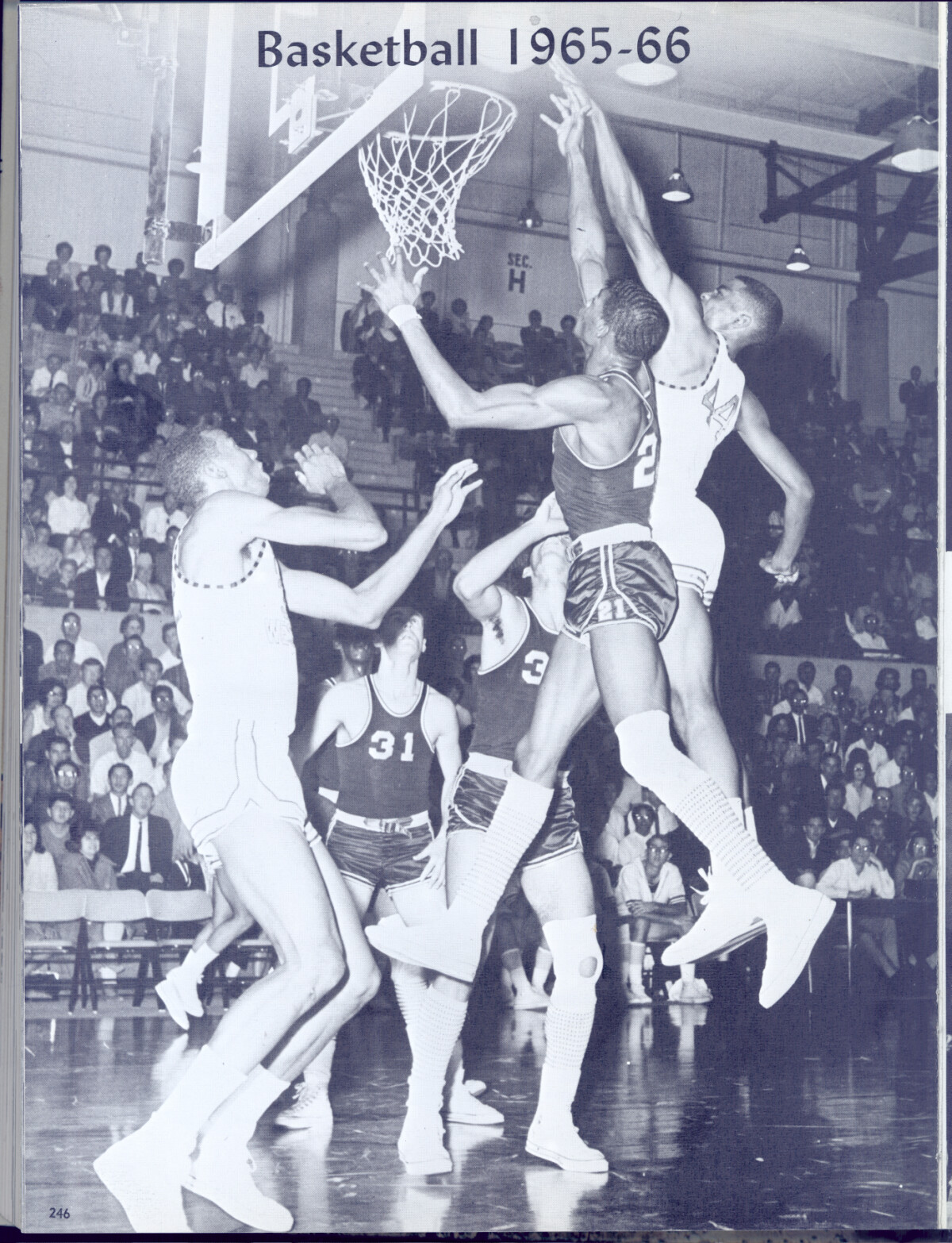
Glory Road
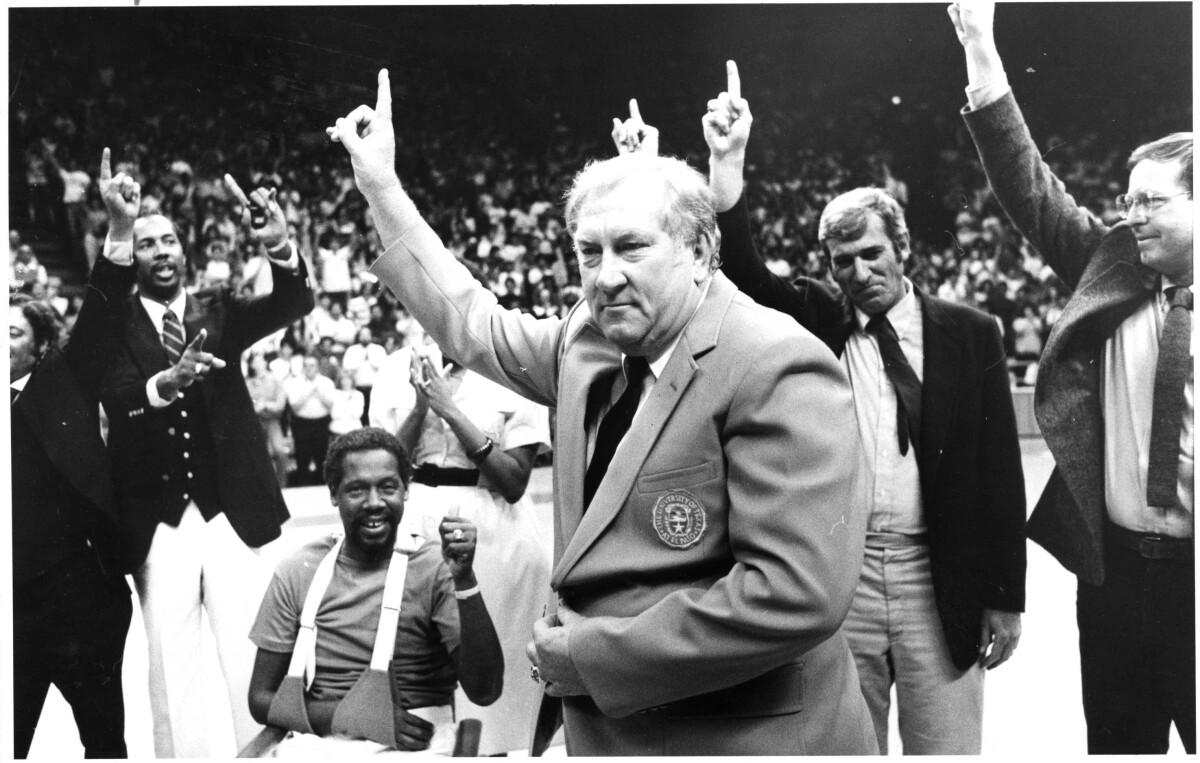
Basketball Championship Game in 1966 - El Paso, Texas
The image shows David Lattin during the 1966 championship game. The 1965–66 Texas Western Miners basketball team made history by winning the 1966 NCAA Men's Division I Basketball Tournament. Coach Don Haskins lined up an all-black team, which defeated the favored Kentucky Wildcats (a team that was all-white) 72-65 in the historic championship game, played at Cole Field House in College Park, Maryland on March 19, 1966. No major-college team had ever started five black players in an NCAA championship game, which is why this game is considered one of the most important ones in the history of college basketball. The civil rights movement to end discrimination against blacks was in full swing. Although institutional racial segregation was outlawed since 1954, it was still common to find all-white college sports teams, particularly in the South. Texas Western University (now UTEP) was little known outside the Southwest and additionally, in 1966, American cultural and sporting mythology insisted at least one white starter was necessary for success. Although never having watched the Miners play, some sportswriters supported those racist prejudices. The legendary coach of Kentucky, Adolph Rupp, had even vowed five blacks would never beat his team. Consequently, the team faced many issues because of their color: Not only the Kentucky team was all-white, but also the crowd was white, so were the NCAA officials, the referees, the coaches, the cheerleaders and almost all the sportswriters on press row. After their win, no one brought out a ladder for them to cut down the net. Nevil Shed had to hoist up Willie Worsley so he could do the honors. The win soon grew into a symbol for blacks' breakthrough into college sports. After the 1966 championship, college teams throughout the South began aggressively recruiting black athletes. All-white leagues like the Atlantic Coast Conference, Southwestern Conference and Southeastern Conference became integrated within the next two years. Adolph Rupp, a very successful coach, never got over the defeat. He blamed it on different things, and even accused the Texas Western team of cheating. Don Haskins (1930-2008) coached the Miners from 1961 to 1999 when he retired. Nicknamed “The Bear”, he led the Miners to 719 wins, as well as a national title (1966), 14 NCAA Tournament appearances and seven Western Athletic Conference championships. He has tutored numerous players who have gone on to play in the NBA (e.g. Antonio Davis, Tim Hardaway, Jim Barnes). Haskins always said that color of skin was never an issue but he wanted to start his best players. While blacks couldn't play at most Southern and Southwestern schools in the mid-1960s, Haskins welcomed them at Texas Western, recruiting them from New York City, Detroit and Gary, Ind. The head coach was inducted into the Naismith Memorial Basketball Hall of Fame in 1997, and the Jim Thorpe Association Oklahoma Sports Hall of Fame in 1999. The championship team of 1966 was inducted into the Naismith Memorial Basketball Hall of Fame in 2007 and inspired the book and film Glory Road. It consisted of seven black players, four whites and one Hispanic. The players were: Bobby Joe Hill, Willie Worsley, Dick Myers, Louis Baudoin, David Lattin, Nevil Shed, Harry Flournoy, Jerry Armstrong, Willie Cager, Togo Railey, David Palacio, Orsten Artis.
Area: Central / University
Source: C.L. Sonnichsen Special Collections, University of Texas at El Paso Library. Collection Name: MS348 El Paso Herald Post records. Photo ID: MS348- 66basketball-Haskins,Don-Nevil shed, bobby hill018.jpg.
Uploaded by: UTEP Library Special Collections
Don Haskins
The image shows Don Haskins, the head coach of the UTEP basketball team (Texas Western until 1967) from 1961 to 1999. The 1965–66 Texas Western Miners basketball team made history by winning the 1966 NCAA Men's Division I Basketball Tournament. Coach Don Haskins lined up an all-black team, which defeated the favored Kentucky Wildcats (a team that was all-white) 72-65 in the historic championship game, played at Cole Field House in College Park, Maryland on March 19, 1966. No major-college team had ever started five black players in an NCAA championship game, which is why this game is considered one of the most important ones in the history of college basketball. The civil rights movement to end discrimination against blacks was in full swing. Although institutional racial segregation was outlawed since 1954, it was still common to find all-white college sports teams, particularly in the South. Texas Western University (now UTEP) was little known outside the Southwest and additionally, in 1966, American cultural and sporting mythology insisted at least one white starter was necessary for success. Although never having watched the Miners play, some sportswriters supported those racist prejudices. The legendary coach of Kentucky, Adolph Rupp, had even vowed five blacks would never beat his team. Consequently, the team faced many issues because of their color: Not only the Kentucky team was all-white, but also the crowd was white, so were the NCAA officials, the referees, the coaches, the cheerleaders and almost all the sportswriters on press row. After their win, no one brought out a ladder for them to cut down the net. Nevil Shed had to hoist up Willie Worsley so he could do the honors. The win soon grew into a symbol for blacks' breakthrough into college sports. After the 1966 championship, college teams throughout the South began aggressively recruiting black athletes. All-white leagues like the Atlantic Coast Conference, Southwestern Conference and Southeastern Conference became integrated within the next two years. Adolph Rupp, a very successful coach, never got over the defeat. He blamed it on different things, and even accused the Texas Western team of cheating. Don Haskins (1930-2008) coached the Miners from 1961 to 1999 when he retired. Nicknamed “The Bear”, he led the Miners to 719 wins, as well as a national title (1966), 14 NCAA Tournament appearances and seven Western Athletic Conference championships. He has tutored numerous players who have gone on to play in the NBA (e.g. Antonio Davis, Tim Hardaway, Jim Barnes). Haskins always said that color of skin was never an issue but he wanted to start his best players. While blacks couldn't play at most Southern and Southwestern schools in the mid-1960s, Haskins welcomed them at Texas Western, recruiting them from New York City, Detroit and Gary, Ind. The head coach was inducted into the Naismith Memorial Basketball Hall of Fame in 1997, and the Jim Thorpe Association Oklahoma Sports Hall of Fame in 1999. The championship team of 1966 was inducted into the Naismith Memorial Basketball Hall of Fame in 2007 and inspired the book and film Glory Road. It consisted of seven black players, four whites and one Hispanic.
Area: Central / University
Source: C.L. Sonnichsen Special Collections, University of Texas at El Paso Library. Collection Name: MS348 El Paso Herald Post records. Photo ID: MS348- 66basketball-Haskins,Don-haskins053.jpg.
Uploaded by: UTEP Library Special Collections
Don Haskins
The image shows Don Haskins, the head coach of the UTEP basketball team (Texas Western until 1967) from 1961 to 1999, during the 1966 championship game. The 1965–66 Texas Western Miners basketball team made history by winning the 1966 NCAA Men's Division I Basketball Tournament. Coach Don Haskins lined up an all-black team, which defeated the favored Kentucky Wildcats (a team that was all-white) 72-65 in the historic championship game, played at Cole Field House in College Park, Maryland on March 19, 1966. No major-college team had ever started five black players in an NCAA championship game, which is why this game is considered one of the most important ones in the history of college basketball. The civil rights movement to end discrimination against blacks was in full swing. Although institutional racial segregation was outlawed since 1954, it was still common to find all-white college sports teams, particularly in the South. Texas Western University (now UTEP) was little known outside the Southwest and additionally, in 1966, American cultural and sporting mythology insisted at least one white starter was necessary for success. Although never having watched the Miners play, some sportswriters supported those racist prejudices. The legendary coach of Kentucky, Adolph Rupp, had even vowed five blacks would never beat his team. Consequently, the team faced many issues because of their color: Not only the Kentucky team was all-white, but also the crowd was white, so were the NCAA officials, the referees, the coaches, the cheerleaders and almost all the sportswriters on press row. After their win, no one brought out a ladder for them to cut down the net. Nevil Shed had to hoist up Willie Worsley so he could do the honors. The win soon grew into a symbol for blacks' breakthrough into college sports. After the 1966 championship, college teams throughout the South began aggressively recruiting black athletes. All-white leagues like the Atlantic Coast Conference, Southwestern Conference and Southeastern Conference became integrated within the next two years. Adolph Rupp, a very successful coach, never got over the defeat. He blamed it on different things, and even accused the Texas Western team of cheating. Don Haskins (1930-2008) coached the Miners from 1961 to 1999 when he retired. Nicknamed “The Bear”, he led the Miners to 719 wins, as well as a national title (1966), 14 NCAA Tournament appearances and seven Western Athletic Conference championships. He has tutored numerous players who have gone on to play in the NBA (e.g. Antonio Davis, Tim Hardaway, Jim Barnes). Haskins always said that color of skin was never an issue but he wanted to start his best players. While blacks couldn't play at most Southern and Southwestern schools in the mid-1960s, Haskins welcomed them at Texas Western, recruiting them from New York City, Detroit and Gary, Ind. The head coach was inducted into the Naismith Memorial Basketball Hall of Fame in 1997, and the Jim Thorpe Association Oklahoma Sports Hall of Fame in 1999. The championship team of 1966 was inducted into the Naismith Memorial Basketball Hall of Fame in 2007 and inspired the book and film Glory Road. It consisted of seven black players, four whites and one Hispanic.
Area: Central / University
Source: C.L. Sonnichsen Special Collections, University of Texas at El Paso Library. Collection Name: MS348 El Paso Herald Post records. Photo ID: MS348- 66basketball-Haskins,Don-haskins086.jpg.
Uploaded by: UTEP Library Special Collections
Basketball championship game in 1966
The image shows Harry Flournoy during the 1966 championship game. The 1965–66 Texas Western Miners basketball team made history by winning the 1966 NCAA Men's Division I Basketball Tournament. Coach Don Haskins lined up an all-black team, which defeated the favored Kentucky Wildcats (a team that was all-white) 72-65 in the historic championship game, played at Cole Field House in College Park, Maryland on March 19, 1966. No major-college team had ever started five black players in an NCAA championship game, which is why this game is considered one of the most important ones in the history of college basketball. The civil rights movement to end discrimination against blacks was in full swing. Although institutional racial segregation was outlawed since 1954, it was still common to find all-white college sports teams, particularly in the South. Texas Western University (now UTEP) was little known outside the Southwest and additionally, in 1966, American cultural and sporting mythology insisted at least one white starter was necessary for success. Although never having watched the Miners play, some sportswriters supported those racist prejudices. The legendary coach of Kentucky, Adolph Rupp, had even vowed five blacks would never beat his team. Consequently, the team faced many issues because of their color: Not only the Kentucky team was all-white, but also the crowd was white, so were the NCAA officials, the referees, the coaches, the cheerleaders and almost all the sportswriters on press row. After their win, no one brought out a ladder for them to cut down the net. Nevil Shed had to hoist up Willie Worsley so he could do the honors. The win soon grew into a symbol for blacks' breakthrough into college sports. After the 1966 championship, college teams throughout the South began aggressively recruiting black athletes. All-white leagues like the Atlantic Coast Conference, Southwestern Conference and Southeastern Conference became integrated within the next two years. Adolph Rupp, a very successful coach, never got over the defeat. He blamed it on different things, and even accused the Texas Western team of cheating. Don Haskins (1930-2008) coached the Miners from 1961 to 1999 when he retired. Nicknamed “The Bear”, he led the Miners to 719 wins, as well as a national title (1966), 14 NCAA Tournament appearances and seven Western Athletic Conference championships. He has tutored numerous players who have gone on to play in the NBA (e.g. Antonio Davis, Tim Hardaway, Jim Barnes). Haskins always said that color of skin was never an issue but he wanted to start his best players. While blacks couldn't play at most Southern and Southwestern schools in the mid-1960s, Haskins welcomed them at Texas Western, recruiting them from New York City, Detroit and Gary, Ind. The head coach was inducted into the Naismith Memorial Basketball Hall of Fame in 1997, and the Jim Thorpe Association Oklahoma Sports Hall of Fame in 1999. The championship team of 1966 was inducted into the Naismith Memorial Basketball Hall of Fame in 2007 and inspired the book and film Glory Road. It consisted of seven black players, four whites and one Hispanic. The players were: Bobby Joe Hill, Willie Worsley, Dick Myers, Louis Baudoin, David Lattin, Nevil Shed, Harry Flournoy, Jerry Armstrong, Willie Cager, Togo Railey, David Palacio, Orsten Artis.
Area: Central / University
Source: C.L. Sonnichsen Special Collections, University of Texas at El Paso Library. Collection Name: MS348 El Paso Herald Post records. Photo ID: MS348- 66basketball-Haskins,Don-haskins002.jpg.
Uploaded by: UTEP Library Special Collections
Championship Team Arriving in El Paso, Texas in 1966
The image shows a delegation, waiting for the return of the 1966 Basketball Championship team. The 1965–66 Texas Western Miners basketball team made history by winning the 1966 NCAA Men's Division I Basketball Tournament. Coach Don Haskins lined up an all-black team, which defeated the favored Kentucky Wildcats (a team that was all-white) 72-65 in the historic championship game, played at Cole Field House in College Park, Maryland on March 19, 1966. No major-college team had ever started five black players in an NCAA championship game, which is why this game is considered one of the most important ones in the history of college basketball. The civil rights movement to end discrimination against blacks was in full swing. Although institutional racial segregation was outlawed since 1954, it was still common to find all-white college sports teams, particularly in the South. Texas Western University (now UTEP) was little known outside the Southwest and additionally, in 1966, American cultural and sporting mythology insisted at least one white starter was necessary for success. Although never having watched the Miners play, some sportswriters supported those racist prejudices. The legendary coach of Kentucky, Adolph Rupp, had even vowed five blacks would never beat his team. Consequently, the team faced many issues because of their color: Not only the Kentucky team was all-white, but also the crowd was white, so were the NCAA officials, the referees, the coaches, the cheerleaders and almost all the sportswriters on press row. After their win, no one brought out a ladder for them to cut down the net. Nevil Shed had to hoist up Willie Worsley so he could do the honors. The win soon grew into a symbol for blacks' breakthrough into college sports. After the 1966 championship, college teams throughout the South began aggressively recruiting black athletes. All-white leagues like the Atlantic Coast Conference, Southwestern Conference and Southeastern Conference became integrated within the next two years. Adolph Rupp, a very successful coach, never got over the defeat. He blamed it on different things, and even accused the Texas Western team of cheating. Don Haskins (1930-2008) coached the Miners from 1961 to 1999 when he retired. Nicknamed “The Bear”, he led the Miners to 719 wins, as well as a national title (1966), 14 NCAA Tournament appearances and seven Western Athletic Conference championships. He has tutored numerous players who have gone on to play in the NBA (e.g. Antonio Davis, Tim Hardaway, Jim Barnes). Haskins always said that color of skin was never an issue but he wanted to start his best players. While blacks couldn't play at most Southern and Southwestern schools in the mid-1960s, Haskins welcomed them at Texas Western, recruiting them from New York City, Detroit and Gary, Ind. The head coach was inducted into the Naismith Memorial Basketball Hall of Fame in 1997, and the Jim Thorpe Association Oklahoma Sports Hall of Fame in 1999. The championship team of 1966 was inducted into the Naismith Memorial Basketball Hall of Fame in 2007 and inspired the book and film Glory Road. It consisted of seven black players, four whites and one Hispanic. The players were: Bobby Joe Hill, Willie Worsley, Dick Myers, Louis Baudoin, David Lattin, Nevil Shed, Harry Flournoy, Jerry Armstrong, Willie Cager, Togo Railey, David Palacio, Orsten Artis.
Area: Central / University
Source: C.L. Sonnichsen Special Collections, University of Texas at El Paso Library. Collection Name: MS001. Photo ID: MS001-66basketball-folder3-Untitled-3.jpg.
Uploaded by: UTEP Library Special Collections
Championship Team arriving in El Paso in 1966
The image shows the 1966 basketball championship team at the El Paso International Airport, surrounded by a crowd. The had just arrived from Kentucky, were they had won the 1966 NCAA Men's Division I Basketball Tournament. The head coach, Don Haskins, can be seen in the middle. The 1965–66 Texas Western Miners basketball team made history by winning the 1966 NCAA Men's Division I Basketball Tournament. Coach Don Haskins lined up an all-black team, which defeated the favored Kentucky Wildcats (a team that was all-white) 72-65 in the historic championship game, played at Cole Field House in College Park, Maryland on March 19, 1966. No major-college team had ever started five black players in an NCAA championship game, which is why this game is considered one of the most important ones in the history of college basketball. The civil rights movement to end discrimination against blacks was in full swing. Although institutional racial segregation was outlawed since 1954, it was still common to find all-white college sports teams, particularly in the South. Texas Western University (now UTEP) was little known outside the Southwest and additionally, in 1966, American cultural and sporting mythology insisted at least one white starter was necessary for success. Although never having watched the Miners play, some sportswriters supported those racist prejudices. The legendary coach of Kentucky, Adolph Rupp, had even vowed five blacks would never beat his team. Consequently, the team faced many issues because of their color: Not only the Kentucky team was all-white, but also the crowd was white, so were the NCAA officials, the referees, the coaches, the cheerleaders and almost all the sportswriters on press row. After their win, no one brought out a ladder for them to cut down the net. Nevil Shed had to hoist up Willie Worsley so he could do the honors. The win soon grew into a symbol for blacks' breakthrough into college sports. After the 1966 championship, college teams throughout the South began aggressively recruiting black athletes. All-white leagues like the Atlantic Coast Conference, Southwestern Conference and Southeastern Conference became integrated within the next two years. Adolph Rupp, a very successful coach, never got over the defeat. He blamed it on different things, and even accused the Texas Western team of cheating. Don Haskins (1930-2008) coached the Miners from 1961 to 1999 when he retired. Nicknamed “The Bear”, he led the Miners to 719 wins, as well as a national title (1966), 14 NCAA Tournament appearances and seven Western Athletic Conference championships. He has tutored numerous players who have gone on to play in the NBA (e.g. Antonio Davis, Tim Hardaway, Jim Barnes). Haskins always said that color of skin was never an issue but he wanted to start his best players. While blacks couldn't play at most Southern and Southwestern schools in the mid-1960s, Haskins welcomed them at Texas Western, recruiting them from New York City, Detroit and Gary, Ind. The head coach was inducted into the Naismith Memorial Basketball Hall of Fame in 1997, and the Jim Thorpe Association Oklahoma Sports Hall of Fame in 1999. The championship team of 1966 was inducted into the Naismith Memorial Basketball Hall of Fame in 2007 and inspired the book and film Glory Road. It consisted of seven black players, four whites and one Hispanic. The players were: Bobby Joe Hill, Willie Worsley, Dick Myers, Louis Baudoin, David Lattin, Nevil Shed, Harry Flournoy, Jerry Armstrong, Willie Cager, Togo Railey, David Palacio, Orsten Artis.
Area: Eastside / El Paso Int'l Airport
Source: C.L. Sonnichsen Special Collections, University of Texas at El Paso Library. Collection Name: MS001. Photo ID: MS001-66basketball-66basketball-folder2-08.
Uploaded by: UTEP Library Special Collections
Championship Team arriving in El Paso in 1966
The image shows the 1966 basketball championship team at the El Paso International Airport, surrounded by a crowd. The had just arrived from Kentucky, were they had won the 1966 NCAA Men's Division I Basketball Tournament. The 1965–66 Texas Western Miners basketball team made history by winning the 1966 NCAA Men's Division I Basketball Tournament. Coach Don Haskins lined up an all-black team, which defeated the favored Kentucky Wildcats (a team that was all-white) 72-65 in the historic championship game, played at Cole Field House in College Park, Maryland on March 19, 1966. No major-college team had ever started five black players in an NCAA championship game, which is why this game is considered one of the most important ones in the history of college basketball. The civil rights movement to end discrimination against blacks was in full swing. Although institutional racial segregation was outlawed since 1954, it was still common to find all-white college sports teams, particularly in the South. Texas Western University (now UTEP) was little known outside the Southwest and additionally, in 1966, American cultural and sporting mythology insisted at least one white starter was necessary for success. Although never having watched the Miners play, some sportswriters supported those racist prejudices. The legendary coach of Kentucky, Adolph Rupp, had even vowed five blacks would never beat his team. Consequently, the team faced many issues because of their color: Not only the Kentucky team was all-white, but also the crowd was white, so were the NCAA officials, the referees, the coaches, the cheerleaders and almost all the sportswriters on press row. After their win, no one brought out a ladder for them to cut down the net. Nevil Shed had to hoist up Willie Worsley so he could do the honors. The win soon grew into a symbol for blacks' breakthrough into college sports. After the 1966 championship, college teams throughout the South began aggressively recruiting black athletes. All-white leagues like the Atlantic Coast Conference, Southwestern Conference and Southeastern Conference became integrated within the next two years. Adolph Rupp, a very successful coach, never got over the defeat. He blamed it on different things, and even accused the Texas Western team of cheating. Don Haskins (1930-2008) coached the Miners from 1961 to 1999 when he retired. Nicknamed “The Bear”, he led the Miners to 719 wins, as well as a national title (1966), 14 NCAA Tournament appearances and seven Western Athletic Conference championships. He has tutored numerous players who have gone on to play in the NBA (e.g. Antonio Davis, Tim Hardaway, Jim Barnes). Haskins always said that color of skin was never an issue but he wanted to start his best players. While blacks couldn't play at most Southern and Southwestern schools in the mid-1960s, Haskins welcomed them at Texas Western, recruiting them from New York City, Detroit and Gary, Ind. The head coach was inducted into the Naismith Memorial Basketball Hall of Fame in 1997, and the Jim Thorpe Association Oklahoma Sports Hall of Fame in 1999. The championship team of 1966 was inducted into the Naismith Memorial Basketball Hall of Fame in 2007 and inspired the book and film Glory Road. It consisted of seven black players, four whites and one Hispanic. The players were: Bobby Joe Hill, Willie Worsley, Dick Myers, Louis Baudoin, David Lattin, Nevil Shed, Harry Flournoy, Jerry Armstrong, Willie Cager, Togo Railey, David Palacio, Orsten Artis.
Area: Eastside / El Paso Int'l Airport
Source: C.L. Sonnichsen Special Collections, University of Texas at El Paso Library. Collection Name: MS348 El Paso Herald Post sports files. Photo ID: MS348-66basketball-folder1-01.jpg.
Uploaded by: UTEP Library Special Collections
Basketball championship game in 1966
The image shows the players during the famous 1966 NCAA Men's Division I Basketball championship game. The 1965–66 Texas Western Miners basketball team made history by winning it. Coach Don Haskins lined up an all-black team, which defeated the favored Kentucky Wildcats (a team that was all-white) 72-65 in the historic championship game, played at Cole Field House in College Park, Maryland on March 19, 1966. No major-college team had ever started five black players in an NCAA championship game, which is why this game is considered one of the most important ones in the history of college basketball. The civil rights movement to end discrimination against blacks was in full swing. Although institutional racial segregation was outlawed since 1954, it was still common to find all-white college sports teams, particularly in the South. Texas Western University (now UTEP) was little known outside the Southwest and additionally, in 1966, American cultural and sporting mythology insisted at least one white starter was necessary for success. Although never having watched the Miners play, some sportswriters supported those racist prejudices. The legendary coach of Kentucky, Adolph Rupp, had even vowed five blacks would never beat his team. Consequently, the team faced many issues because of their color: Not only the Kentucky team was all-white, but also the crowd was white, so were the NCAA officials, the referees, the coaches, the cheerleaders and almost all the sportswriters on press row. After their win, no one brought out a ladder for them to cut down the net. Nevil Shed had to hoist up Willie Worsley so he could do the honors. The win soon grew into a symbol for blacks' breakthrough into college sports. After the 1966 championship, college teams throughout the South began aggressively recruiting black athletes. All-white leagues like the Atlantic Coast Conference, Southwestern Conference and Southeastern Conference became integrated within the next two years. Adolph Rupp, a very successful coach, never got over the defeat. He blamed it on different things, and even accused the Texas Western team of cheating. Don Haskins (1930-2008) coached the Miners from 1961 to 1999 when he retired. Nicknamed “The Bear”, he led the Miners to 719 wins, as well as a national title (1966), 14 NCAA Tournament appearances and seven Western Athletic Conference championships. He has tutored numerous players who have gone on to play in the NBA (e.g. Antonio Davis, Tim Hardaway, Jim Barnes). Haskins always said that color of skin was never an issue but he wanted to start his best players. While blacks couldn't play at most Southern and Southwestern schools in the mid-1960s, Haskins welcomed them at Texas Western, recruiting them from New York City, Detroit and Gary, Ind. The head coach was inducted into the Naismith Memorial Basketball Hall of Fame in 1997, and the Jim Thorpe Association Oklahoma Sports Hall of Fame in 1999. The championship team of 1966 was inducted into the Naismith Memorial Basketball Hall of Fame in 2007 and inspired the book and film Glory Road. It consisted of seven black players, four whites and one Hispanic. The players were: Bobby Joe Hill, Willie Worsley, Dick Myers, Louis Baudoin, David Lattin, Nevil Shed, Harry Flournoy, Jerry Armstrong, Willie Cager, Togo Railey, David Palacio, Orsten Artis.
Area: Central / University
Source: C.L. Sonnichsen Special Collections, University of Texas at El Paso Library. Collection Name: MS001. Photo ID: MS001-66basketball-folder2-05.
Uploaded by: UTEP Library Special Collections
Basketball championship game in 1966
The image shows a scene of the famous NCAA Men's Division I Basketball championship game in 1966. The player to the right in white is Harry Flournoy (Nr. 44). The 1965–66 Texas Western Miners basketball team made history by winning the 1966 NCAA Men's Division I Basketball Tournament. Coach Don Haskins lined up an all-black team, which defeated the favored Kentucky Wildcats (a team that was all-white) 72-65 in the historic championship game, played at Cole Field House in College Park, Maryland on March 19, 1966. No major-college team had ever started five black players in an NCAA championship game, which is why this game is considered one of the most important ones in the history of college basketball. The civil rights movement to end discrimination against blacks was in full swing. Although institutional racial segregation was outlawed since 1954, it was still common to find all-white college sports teams, particularly in the South. Texas Western University (now UTEP) was little known outside the Southwest and additionally, in 1966, American cultural and sporting mythology insisted at least one white starter was necessary for success. Although never having watched the Miners play, some sportswriters supported those racist prejudices. The legendary coach of Kentucky, Adolph Rupp, had even vowed five blacks would never beat his team. Consequently, the team faced many issues because of their color: Not only the Kentucky team was all-white, but also the crowd was white, so were the NCAA officials, the referees, the coaches, the cheerleaders and almost all the sportswriters on press row. After their win, no one brought out a ladder for them to cut down the net. Nevil Shed had to hoist up Willie Worsley so he could do the honors. The win soon grew into a symbol for blacks' breakthrough into college sports. After the 1966 championship, college teams throughout the South began aggressively recruiting black athletes. All-white leagues like the Atlantic Coast Conference, Southwestern Conference and Southeastern Conference became integrated within the next two years. Adolph Rupp, a very successful coach, never got over the defeat. He blamed it on different things, and even accused the Texas Western team of cheating. Don Haskins (1930-2008) coached the Miners from 1961 to 1999 when he retired. Nicknamed “The Bear”, he led the Miners to 719 wins, as well as a national title (1966), 14 NCAA Tournament appearances and seven Western Athletic Conference championships. He has tutored numerous players who have gone on to play in the NBA (e.g. Antonio Davis, Tim Hardaway, Jim Barnes). Haskins always said that color of skin was never an issue but he wanted to start his best players. While blacks couldn't play at most Southern and Southwestern schools in the mid-1960s, Haskins welcomed them at Texas Western, recruiting them from New York City, Detroit and Gary, Ind. The head coach was inducted into the Naismith Memorial Basketball Hall of Fame in 1997, and the Jim Thorpe Association Oklahoma Sports Hall of Fame in 1999. The championship team of 1966 was inducted into the Naismith Memorial Basketball Hall of Fame in 2007 and inspired the book and film Glory Road. It consisted of seven black players, four whites and one Hispanic. The players were: Bobby Joe Hill, Willie Worsley, Dick Myers, Louis Baudoin, David Lattin, Nevil Shed, Harry Flournoy, Jerry Armstrong, Willie Cager, Togo Railey, David Palacio, Orsten Artis.
Area: Central / University
Source: C.L. Sonnichsen Special Collections, University of Texas at El Paso Library. Collection Name: MS001. Photo ID: MS001-66basketball-folder1-01.jpg.
Uploaded by: UTEP Library Special Collections
Don Haskins
The image shows Don Haskins on the basketball court. The date of the photograph is unclear, it might be from the 1990s. Don Haskins (1930-2008) coached the Miners from 1961 to 1999 when he retired. Nicknamed “The Bear”, he led the Miners to 719 wins, as well as a national title (1966), 14 NCAA Tournament appearances and seven Western Athletic Conference championships. He has tutored numerous players who have gone on to play in the NBA (e.g. Antonio Davis, Tim Hardaway, Jim Barnes). Haskins always said that color of skin was never an issue but he wanted to start his best players. While blacks couldn't play at most Southern and Southwestern schools in the mid-1960s, Haskins welcomed them at Texas Western, recruiting them from New York City, Detroit and Gary, Ind. The head coach was inducted into the Naismith Memorial Basketball Hall of Fame in 1997, and the Jim Thorpe Association Oklahoma Sports Hall of Fame in 1999. Haskins wrote history when he won the NCAA Men's Division I Basketball Tournament in 1966 with an all-black team. They defeated the favored Kentucky Wildcats, an all-white team and coached by the legendary Adolph Rupp. The win soon grew into a symbol for blacks' breakthrough into college sports. After the 1966 championship, college teams throughout the South began aggressively recruiting black athletes. All-white leagues like the Atlantic Coast Conference, Southwestern Conference and Southeastern Conference became integrated within the next two years.
Area: Central / University
Source: C.L. Sonnichsen Special Collections, University of Texas at El Paso Library. Collection Name: MS348 El Paso Herald Post records. Photo ID: MS348- 66basketball-Haskins,Don-haskins069.jpg.
Uploaded by: UTEP Library Special Collections
Report this entry
More from the same community-collection
Pan American Round Table Directors, UTEP Library March 30, 2022
Pan American Round Table Directors, UTEP Library March 30, 2022 ...
Mary Carmen Saucedo, El Paso, TX, educator c.2011
Mary Carmen Saucedo, El Paso, TX, educator c.2011
Bio and Work by Gabriel Gaytan from "Juntos" calendar c. 2011
Bio and Work by Gabriel Gaytan from "Juntos" calendar c. 2011
Juntos Art Association invitation at the Centennial Museum October 10, 2015
Juntos Art Association invitation at the Centennial Museum ...
Senator Kay Bailey Hutchinson with governmental officials in El Paso, TX
Senator Kay Bailey Hutchinson with governmental officials in El ...
adobe odes, a book of poems written by author Pat Mora, native El Pasoan, 2023
Photo of cover book from UTEP Library archives written by Pat ...
Estella Portillo Trambley authored this book.
Estella Portillo was a Chicana writer. She worked as a school ...


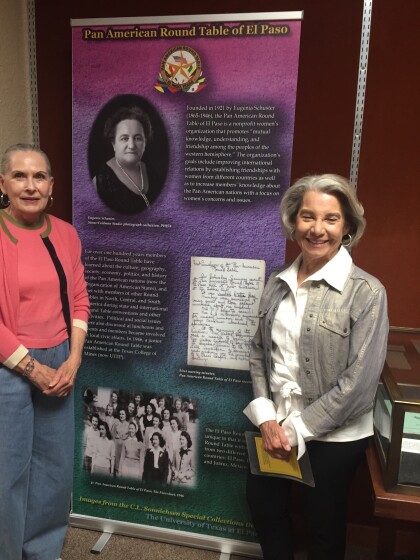

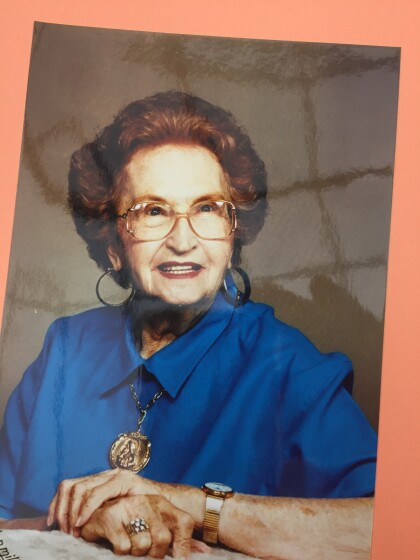
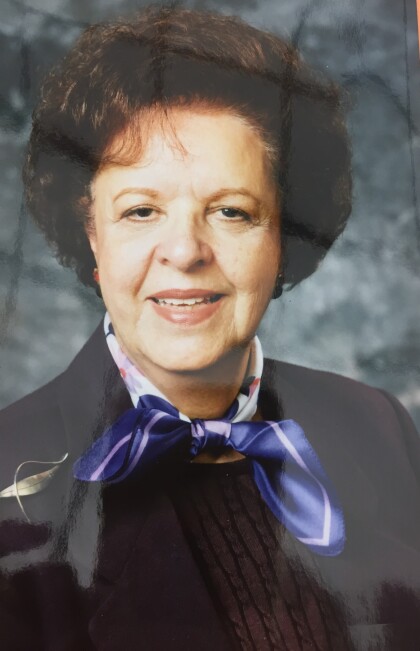
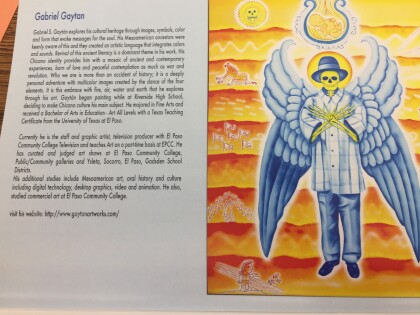
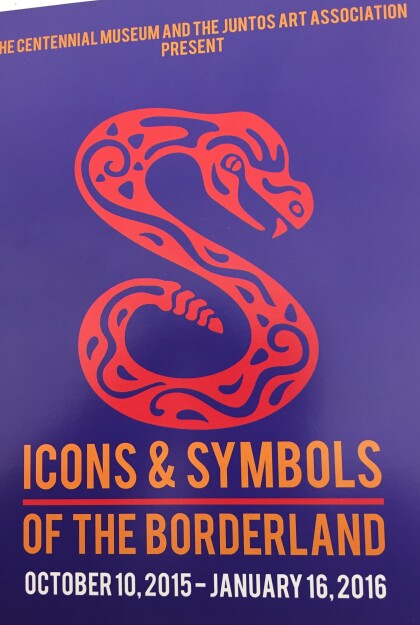
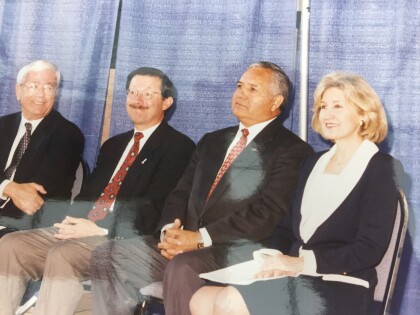
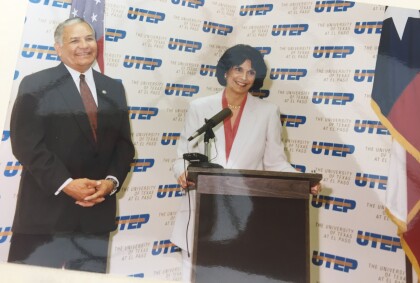
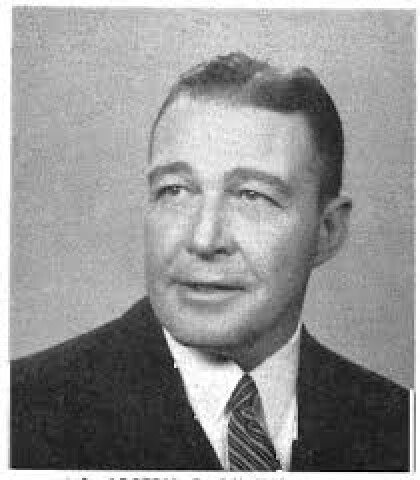
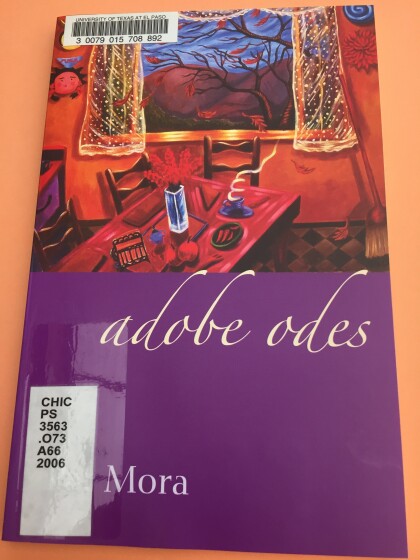
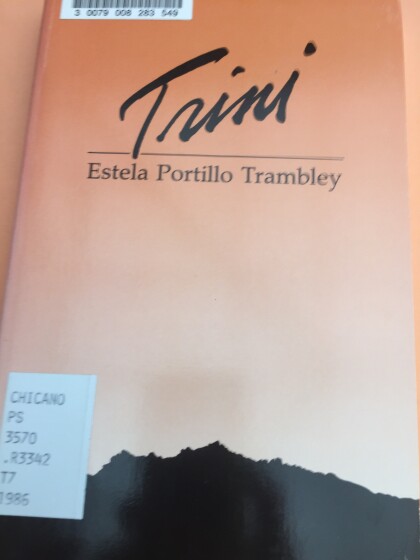
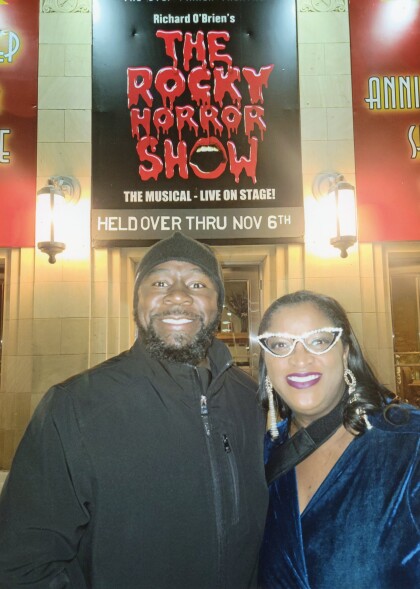
Comments
Add a comment